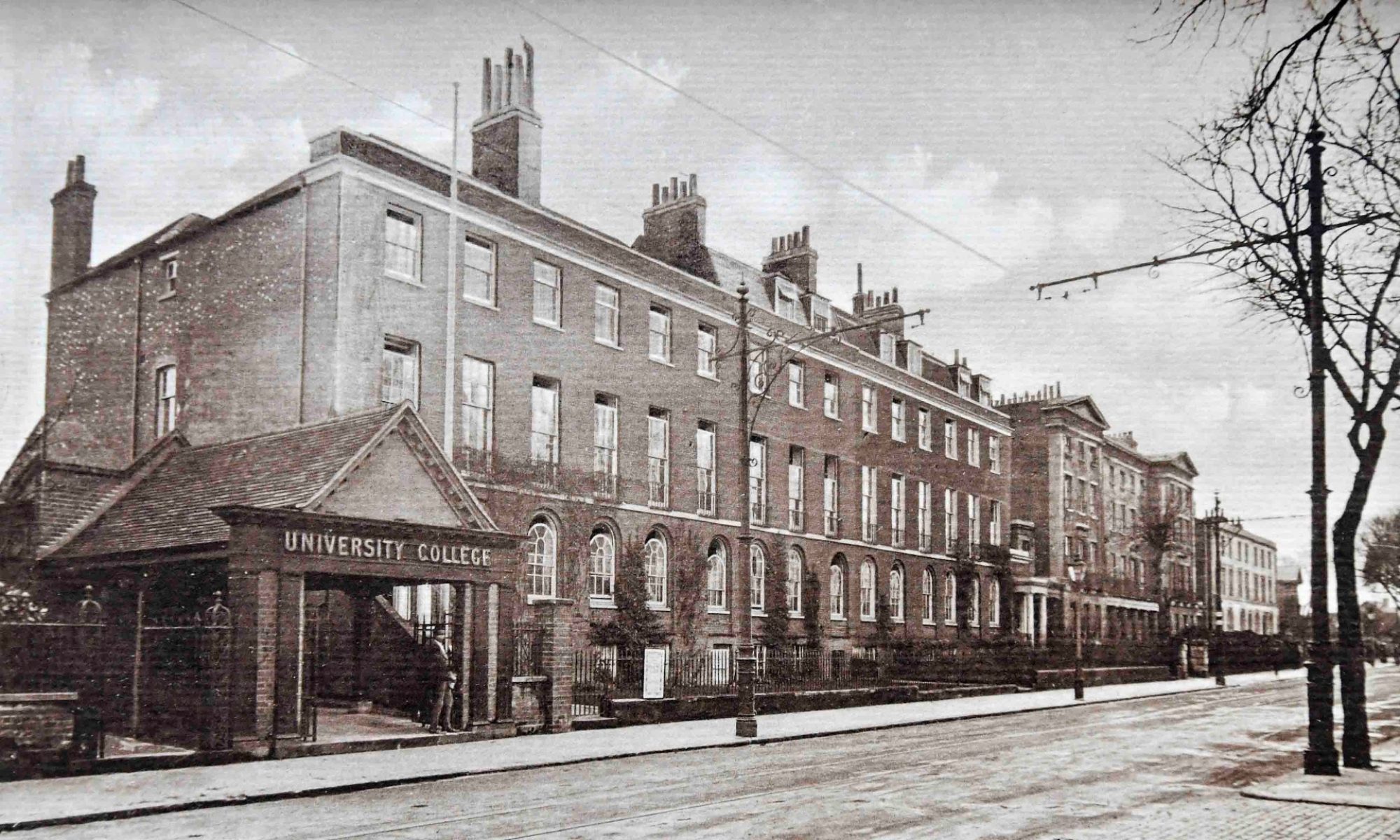The previously mentioned rag stunt claiming a discovery of diamonds in the local Thames gravels appeared in The Times on February 14th 1959, exactly 64 years ago today. It was not the only stunt to hit the headlines around that time, however.
First prize should probably go to the tongue-in-cheek petition delivered to 10 Downing Street in 1953 after male students reportedly invited French women to add glamour to that year’s procession. The full story can be seen here on Pathé News.
Of course, Reading rags predate the 1950s. The first photograph I have been able to locate was an event in aid of the Royal Berkshire Hospital in 1926. A total of £650 was raised that year.
The Reading Chronicle is a good source for subsequent rags. Photos of processions through town, such as these from 1970, and accounts of money raised leave no doubt that these events were an important feature in the Reading calendar.
Personal Memories
Like most people, I suspect, it is the stunts rather than the processions that stick in my mind. The first and possibly the most memorable was in the spring of 1969 when I was a first-year student in Bridges Hall. When the fire alarm went off in the early hours of the morning, the nonchalant reaction of second- and third-year students – a few shrugs of the shoulders and a resigned ‘Oh, sheep night again!’ – made no sense. Having gone back to bed, I was reawakened at 7am when, in the words of Alice, things just got curiouser and curiouser. My room overlooked a central green where a land rover advanced to the strains of ‘Sheep may safely graze’; they even had a bleating lamb in tow.
Further conversations over the next day helped to make sense of what I’d seen. The warden of Wantage Hall had boasted in 1928 that, when the gates were closed at 10am, nobody could enter or leave before the next morning. Who could resist the challenge? Most residents at the time were students of Agriculture with access to livestock. Using their ingenuity, they passed sheep through a ground floor bathroom window and the warden awoke to a small flock safely grazing on the quad lawn.

Inevitably, it was going to be difficult to equal the theatricality of 1969. The following year, instead of live bleating, Bridges collaborators opened fire doors so that Wantage warriors could stick cardboard cut-outs of sheep to windows as they advanced through the building. In a reversal of historical roles, Miss Poole, the sub-warden, clearly alert to what was happening, set off in hot pursuit, pulling the sheep outlines down as quickly as they went up.
Bruised Wantage egos were not to be outdone. Sometime later, while Bridges residents were at a formal dinner, they entered the building with the mission to remove as many toilet rolls as possible while the meal was in progress. It fell to the president of the JCR, one Sheila Chipchase, to sheepishly break the news to Miss Poole who instructed her to undertake a survey of the building and report back. On receiving the news that only 4 rolls remained, Miss Poole, totally unfazed, replied: ‘Well, make arrangements for distribution!’
The RAG today
Since the 1960s, rag week as we knew it has been rebranded and events take place throughout the year. According to the Students’ Union website:
‘Reading Raising And Giving (RAG) is the official fundraising body at The University of Reading. As a student-orientated society, we work to fundraise for a variety of charities, locally and globally, as well as engaging widely with the local community. To do this, we provide students with exciting events and experiences, from themed union nights to hitching across the country and into Europe.’
So, the same emphasis on charity and fun, but marked differences in format. Who knows what tales there will be in years to come!

Note
Viv Edwards is Professor Emerita of Language and Education at the University of Reading where she was a student in the Department of Linguistic Science between 1968 and 1976.
Sources
Childs, W. M. (1929). A note on the University of Reading. (University of Reading Special Collections, History Collection).
Holt, J. C. (1977). The University of Reading: the first fifty years. Reading: University of Reading Press.
The Rattler, the Unofficial Organ of the Students’ Union, October 1930. University of Reading.




